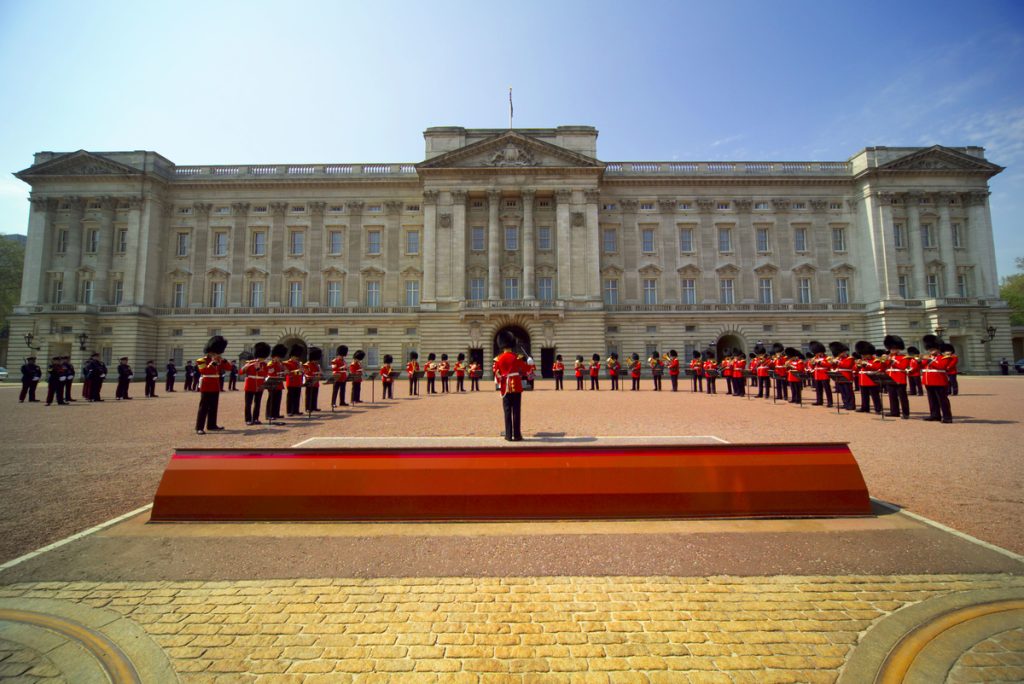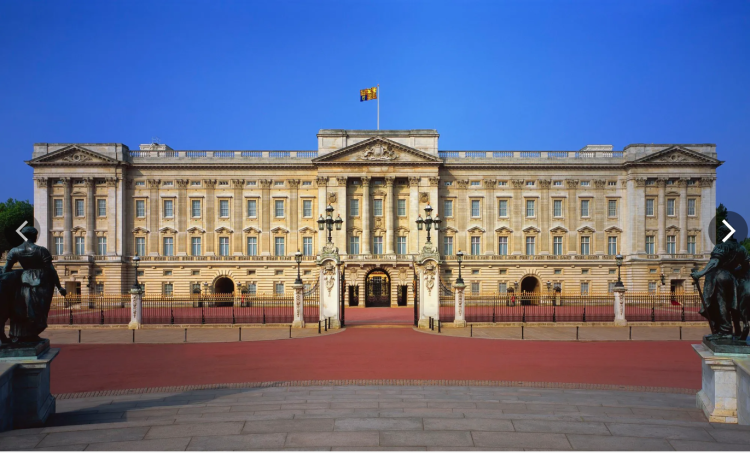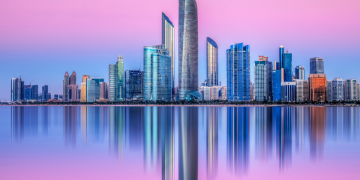In the city center of London, which is full of historical heritage and modern vitality, there is a world-famous Palace – Buckingham Palace (Buckingham Palace), which is not only the official residence and administrative headquarters of the British royal family, but also one of the most representative landmarks in London and even the whole UK. The palace has not only witnessed hundreds of years of historical changes in Britain, but also a symbol of the power and glory of the British royal family. This paper will explore Buckingham Palace’s historical background, architectural features, cultural significance and its role in modern society, and look into its future development prospects.
- Historical Evolution: The legendary transformation from private residence to royal palace
The history of Buckingham Palace dates back to 1703, when it was built by the Duke of Buckingham and the Duke of Normanby as their London residence, hence the name “Buckingham Palace”. At first, the palace was not as grand as it is today, but a relatively small city residence. Over time, however, its fortunes changed dramatically.
In 1761, George III bought the palace as a private residence for himself and his wife. Since then, Buckingham Palace has gradually become the main residence of the British royal family. Over the following centuries, the palace underwent several additions and modifications to accommodate the growing needs of the royal family and to demonstrate its exalted status. Each extension and renovation has incorporated the most popular architectural styles and elements of the time, allowing Buckingham Palace to gradually develop into a magnificent building with both classical and modern beauty.
In particular, a series of extensions at the turn of the 19th and 20th centuries, led by architects John Nash and Edward Blore, brought Buckingham Palace to its present size and splendour. Nash’s design incorporates elements of classicism and neoclassicism, giving the palace a dignified and elegant look. These additions not only increased the floor area of the palace, but also carefully decorated and furnished its interior, making Buckingham Palace a real royal palace.

Second, architectural features: the perfect integration of classical and modern
The architectural style of Buckingham Palace is typical of English classicism and is known for its symmetrical layout, grand facade and exquisite details. The front of the palace faces London’s main street, The Mall, and consists of three main floors and two lower wings, with a large central courtyard in the middle. The exterior wall of the whole building is mainly white, with gold decoration, which appears both noble and elegant. This color combination not only makes the palace more visually striking and prominent, but also means the purity and dignity of the royal family.
The facade of the palace has a large number of Windows and porches, making the interior Spaces transparent and bright. The roof is decorated with elaborate stone carvings and balustrades, while the front of the palace has a huge balcony, which is the site of important ceremonies and celebrations of the British royal family, such as the annual Trooping of the Colour and the Royal Air Show. The design of the balcony not only makes it more convenient for the royal family to interact and communicate with the public, but also becomes a highlight and feature of the palace.
In addition to the grandeur of the exterior, the interior decoration of the palace is equally luxurious. The halls, banqueting rooms, meeting rooms and private residences are filled with precious works of art, tapestries, murals and furniture, each telling the history and taste of the British royal family. These decorations not only show the wealth and status of the royal family, but also reflect the unique charm of British culture and art.
Cultural significance: the symbol of the royal family and the pride of the country
Buckingham Palace is not just a building, it is a symbol of British culture and history. The palace has witnessed countless important historical events, from royal coronations to national celebrations, to receiving foreign dignitaries on state visits, Buckingham Palace is the stage for these historic moments. It carries a rich historical and cultural heritage and is an enduring pride and symbol in the hearts of the British people.
For the British people, Buckingham Palace is not only the residence of the royal family, it is the embodiment of national pride and national spirit. Every summer, when members of the royal family are not in London, the Palace is open to the public, attracting thousands of tourists to visit and experience the glorious history and cultural charm of the British royal family. Visitors can enjoy precious works of art here, learn about the history and tradition of the royal family, and feel the unique charm of British culture.
Buckingham Palace is also home to a rich artistic and cultural heritage. The palace has a large collection of artworks, including paintings, sculptures, porcelain, furniture, etc. These precious collections not only show the artistic taste of the British royal family, but also reflect the cultural exchanges between the UK and the rest of the world. These artworks are not only of high aesthetic value, but also important materials for the study of British history and culture.
Modern role: Administrative headquarters and center of public activities of the royal family
In modern society, Buckingham Palace continues to play the role of the administrative headquarters of the British Royal family. This is the main place for the royal family to conduct business, hold meetings and receive guests. At the same time, the palace is also an important place for the royal family to hold various public events, such as charity dinners, award ceremonies and concerts. These activities not only show the vitality of the royal family and the image of the people, but also make positive contributions to social welfare.
Every year, Buckingham Palace is in the spotlight for important festivals and celebrations such as Christmas, Easter and Commonwealth Day. In particular, the annual Trooping the Colour ceremony, when the Queen or prince stands on the balcony of the palace and greets the troops and the public below, has undoubtedly become a symbol of national unity and royal dignity in the UK. This ceremony not only shows the majesty and dignity of the royal family, but also reflects the close connection and interaction between the royal family and the people.
Buckingham Palace is also actively involved in social welfare, through a variety of charitable events and fundraising activities, support for education, health care and cultural preservation projects, to demonstrate the positive role of the royal family in modern society. These public welfare activities not only reflect the royal family’s social responsibility and caring heart, but also make positive contributions to promoting social progress and development.
Environmental protection and sustainable development
In the 21st century, with the global emphasis on environmental protection and sustainability, Buckingham Palace is actively engaged in this agenda. The palace has taken a number of measures to reduce energy consumption and carbon emissions, including installing solar photovoltaic panels, using energy-efficient lamps and improving the building’s insulation performance. These environmental protection measures not only help reduce the palace’s operating costs, but also make a positive contribution to the cause of environmental protection.
The palace also focuses on green gardening and conservation of ecological diversity. The palace’s gardens are designed to be an eco-friendly environment, with a variety of native plants planted to provide habitat for birds and other wildlife. These green measures not only add a natural and vitality to the palace, but also make a positive contribution to the improvement of the urban ecological environment.

Vi. Future Outlook: Equal emphasis on inheritance and innovation
In the future, Buckingham Palace will continue to play an important role in British society and culture. With the rise of a new generation of royals and changing public attitudes towards the royal family, the palace will have to adapt to new challenges and opportunities.
Buckingham Palace needs to continue its long history and cultural traditions and maintain its unique place in the UK and the international community. To this end, the palace will strengthen the protection and inheritance of cultural heritage, through a variety of cultural activities and exhibitions, so that more people understand and appreciate the unique charm of British culture.
Buckingham Palace also needs to move with The Times and be more open and inclusive, in tune with the values and needs of modern society. In recent years, for example, Buckingham Palace has begun to engage more directly with the public through social media and online platforms, sharing the daily life and work of the royal family in an effort to increase transparency and accessibility. This innovative way of communication not only attracts more young audiences, but also makes the distance between the royal family and the public closer.
In the future, Buckingham Palace will continue to be committed to environmental protection and sustainable development. The palace will further increase investment in environmental protection, promote the application of green buildings and renewable energy, and make greater contributions to the cause of environmental protection.
Conclusion: Eternal Royal symbol and hope for the future
As the official residence and administrative headquarters of the British Royal family, Buckingham Palace is not only a symbol of British history and culture, but also a dynamic and innovative institution in modern society. Whether it is its magnificent architecture, rich cultural heritage, or its active role in environmental protection and public activities, Buckingham Palace demonstrates the enduring charm and far-reaching impact of the British royal family.
For years to come, Buckingham Palace will continue to carry the hopes and dreams of the British people, serving as a bridge between the past and the future. No matter how The Times change, this palace will stand and always shine its light. As historians have said: “Buckingham Palace is not just a palace, it is a witness to British history, the glory of the royal family, but also the embodiment of the soul of the nation.” Every corner of this palace, every stone tells the story of the United Kingdom, so that everyone who visits can feel the depth of history and culture. In the future development, Buckingham Palace will undoubtedly face more challenges and opportunities, but no matter how the future changes, the palace will continue to shine in the history of Britain and even the world with its unique charm and immortal history, and become an eternal symbol of the royal family and the hope of the future.





















